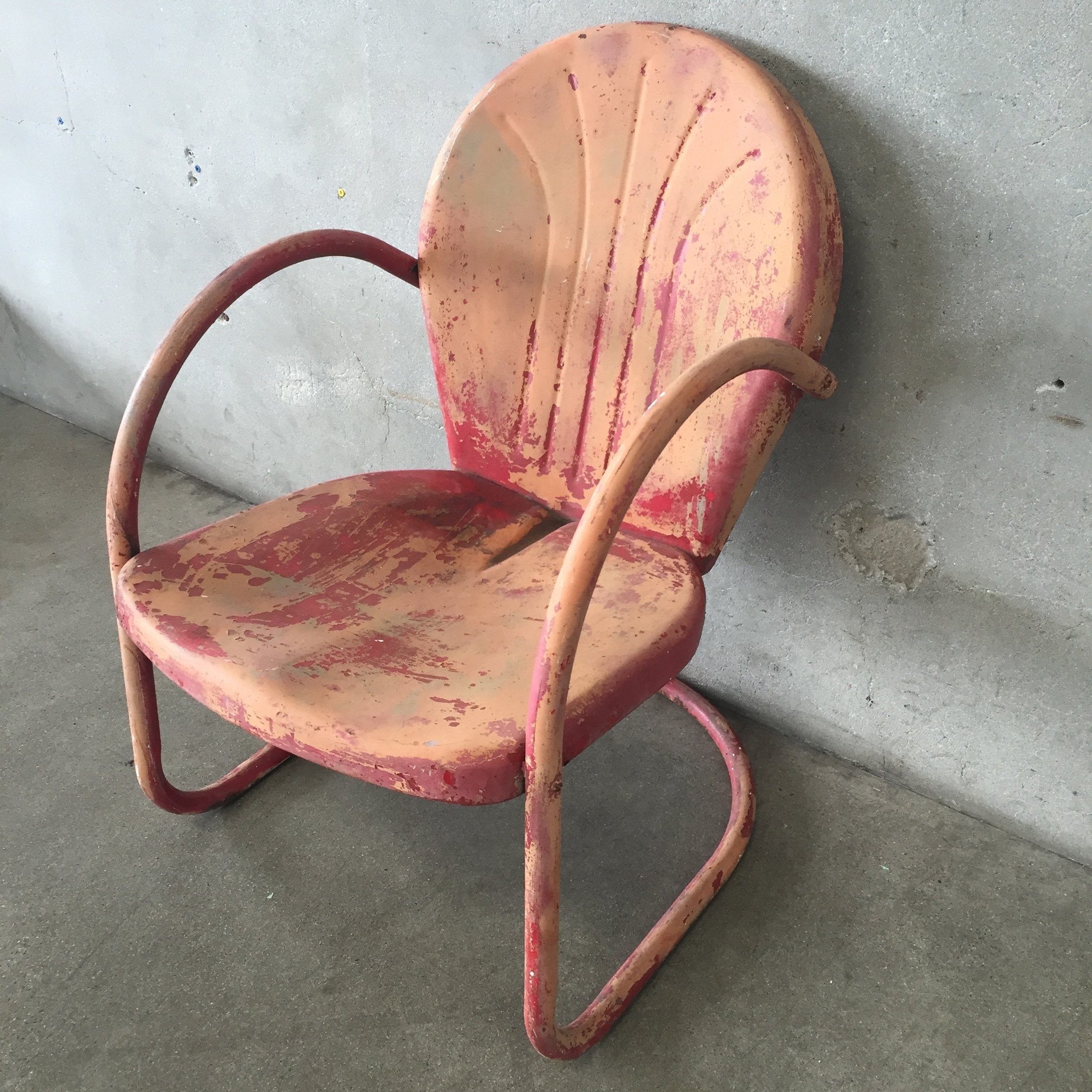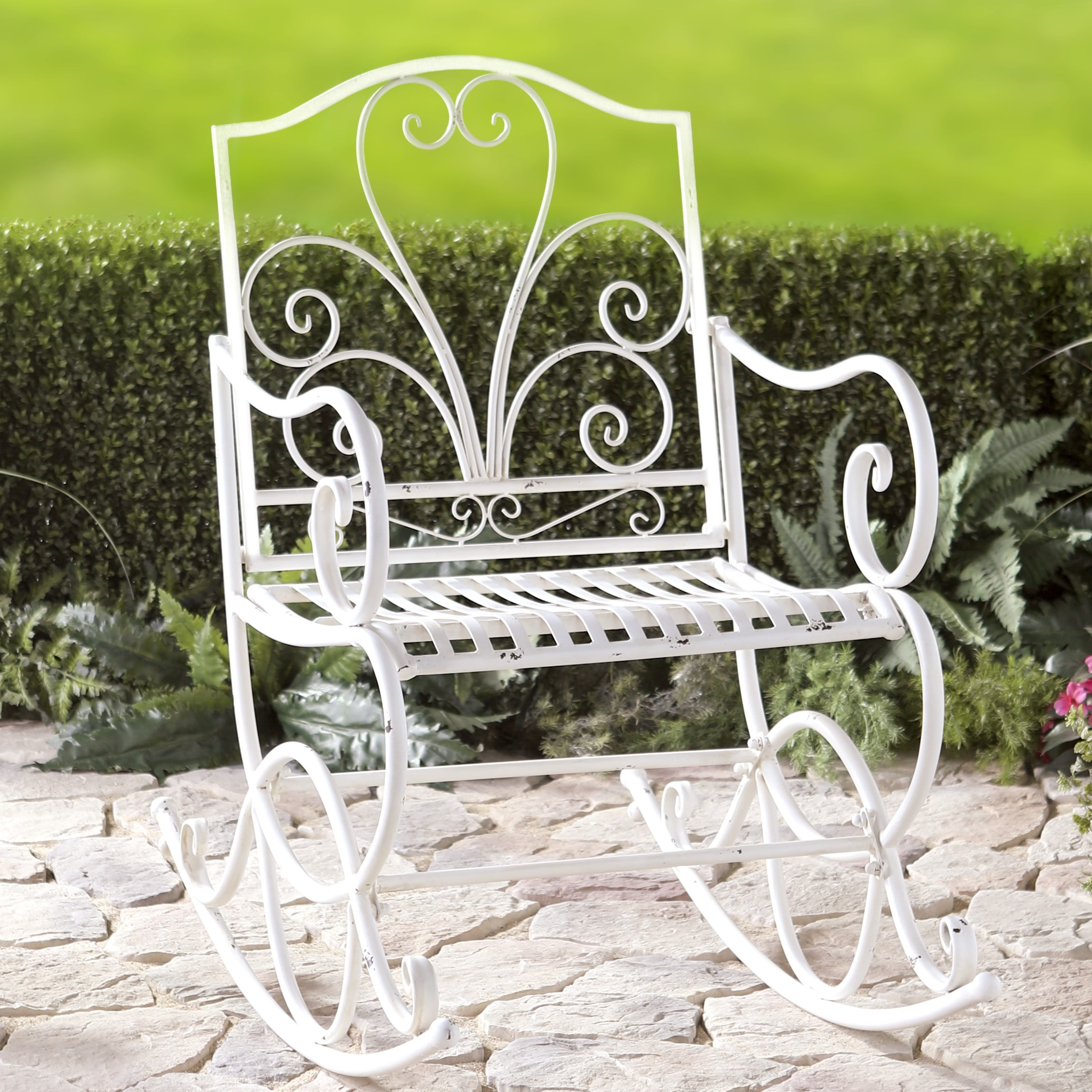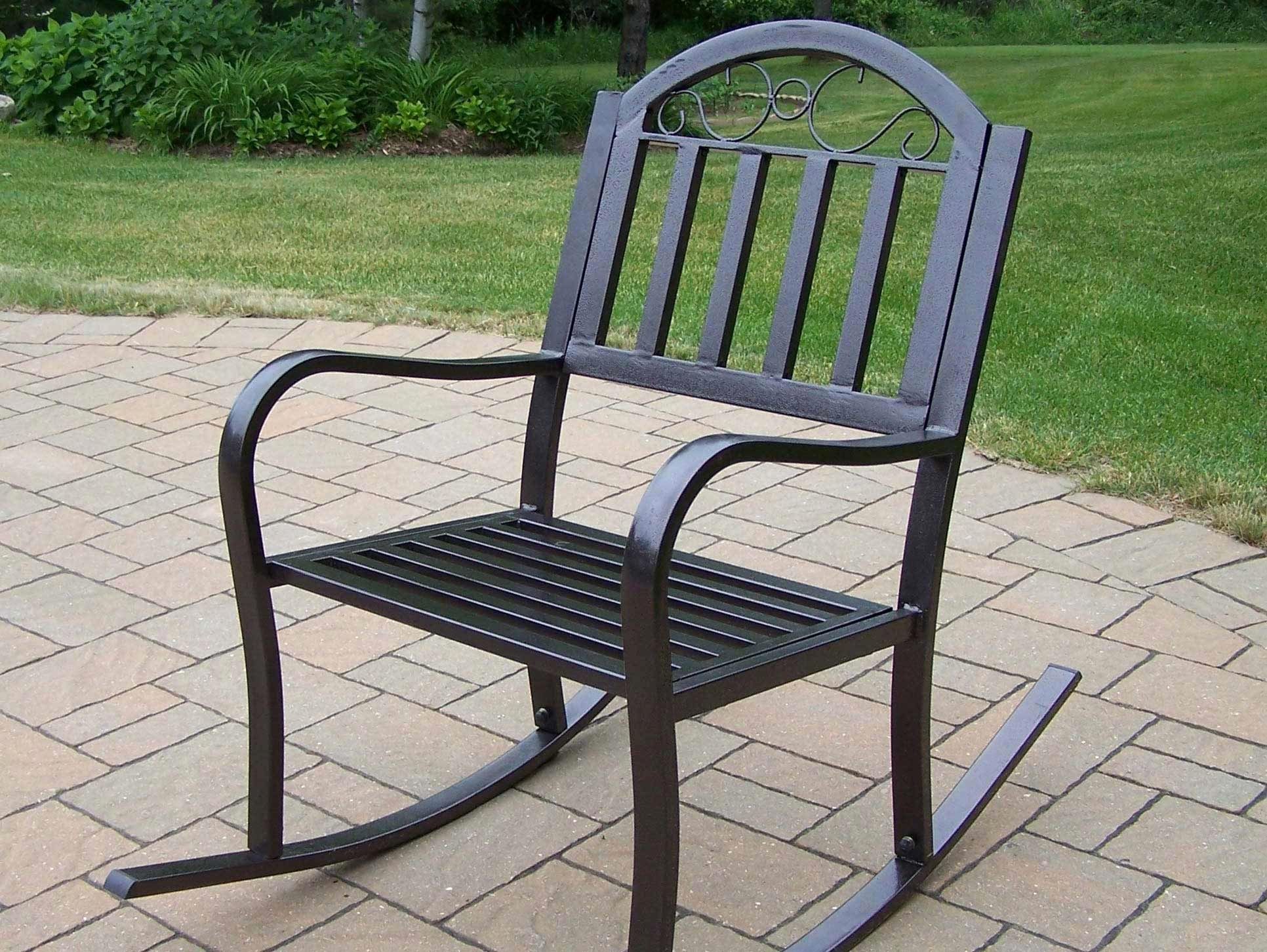History and Origins of Old Metal Rocking Chairs

Rocking chairs have been a beloved furniture staple for centuries, providing comfort and relaxation in homes around the world. While wood has been the traditional material for rocking chairs, metal designs emerged as a distinct style, captivating a different set of audiences. The evolution of metal rocking chairs is a fascinating journey, shaped by historical events, technological advancements, and changing tastes.
Early Forms and Influences, Old metal rocking chair
The earliest rocking chairs, dating back to the 18th century, were primarily crafted from wood. The rocking motion, a gentle back-and-forth sway, was inspired by traditional Native American cradle boards. The invention of the rocking chair is often attributed to Benjamin Franklin, who is said to have designed a rocking chair with a specific curve in the rockers to provide a more comfortable and balanced rocking experience. These early rocking chairs were primarily handcrafted and often featured ornate designs and carvings.
The Rise of Metal Rocking Chairs
The late 19th and early 20th centuries witnessed the rise of metal furniture production, driven by industrialization and technological advancements. Cast iron, a durable and affordable material, became a popular choice for furniture manufacturing. Metal rocking chairs emerged as a new and exciting style, offering durability, affordability, and a distinct aesthetic.
Notable Manufacturers and Designers
Several manufacturers and designers played a significant role in the development of metal rocking chairs.
- The American Manufacturing Company (AMC), established in 1853, was one of the first companies to mass-produce metal furniture, including rocking chairs. AMC’s cast iron rocking chairs were known for their intricate designs and durable construction.
- The Heywood-Wakefield Company was another prominent manufacturer of metal rocking chairs, specializing in lighter and more affordable designs. Heywood-Wakefield’s rocking chairs were often featured in homes and public spaces, becoming a familiar sight in the early 20th century.
- The Art Deco movement in the 1920s and 1930s influenced the design of metal rocking chairs, with streamlined shapes, geometric patterns, and bold colors becoming popular features. Designers like Eileen Gray and Marcel Breuer incorporated metal into their furniture designs, creating elegant and functional rocking chairs that reflected the modern aesthetic of the time.
Timeline of Significant Milestones
- 1760s: Benjamin Franklin is credited with inventing the rocking chair with a specific curve in the rockers to enhance comfort and balance.
- Late 19th century: The Industrial Revolution leads to the rise of metal furniture production, with cast iron becoming a popular material for rocking chairs.
- Early 20th century: Companies like The American Manufacturing Company and The Heywood-Wakefield Company mass-produce metal rocking chairs, making them more affordable and accessible to a wider audience.
- 1920s-1930s: The Art Deco movement influences metal rocking chair design, with streamlined shapes, geometric patterns, and bold colors becoming popular features.
- Mid-20th century: Metal rocking chairs become a staple in homes and public spaces, often featuring simple and functional designs.
- Late 20th century: Metal rocking chairs continue to be produced, with a focus on modern and contemporary styles.
Styles and Designs of Old Metal Rocking Chairs

Old metal rocking chairs come in a variety of styles, reflecting different periods and design trends. From the ornate Victorian era to the sleek lines of mid-century modern, these chairs offer a glimpse into the past and showcase the evolution of design aesthetics.
Victorian Style
Victorian-era metal rocking chairs, popular in the late 19th century, often feature intricate designs and elaborate embellishments.
- Materials: Wrought iron was a common material, often adorned with decorative elements like scrolls, floral motifs, and geometric patterns.
- Construction: The chairs were typically built with sturdy frames and detailed craftsmanship.
- Decorative Elements: These chairs were often painted in dark colors like black, brown, or green, and sometimes embellished with gilding or other metallic finishes.
Art Deco Style
Art Deco metal rocking chairs, popular in the 1920s and 1930s, reflected the geometric and streamlined aesthetic of the era.
- Materials: Chrome, nickel, and brass were popular materials, often combined with other materials like wood or leather.
- Construction: The chairs were often characterized by their clean lines, simple forms, and use of geometric shapes.
- Decorative Elements: Art Deco chairs often featured bold colors, geometric patterns, and abstract designs.
Mid-Century Modern Style
Mid-century modern metal rocking chairs, popular in the 1950s and 1960s, reflected the minimalist and functional design trends of the time.
- Materials: Aluminum, steel, and plastic were popular materials, often combined with wood or fabric.
- Construction: The chairs were often characterized by their simple forms, clean lines, and use of organic shapes.
- Decorative Elements: Mid-century modern chairs often featured bright colors, bold patterns, and geometric designs.
Rustic Style
Rustic metal rocking chairs, popular in the late 20th century and early 21st century, often feature a more natural and weathered look.
- Materials: Iron, steel, and reclaimed wood are common materials, often combined with other natural elements like leather or stone.
- Construction: The chairs were often characterized by their simple forms, rugged construction, and use of natural materials.
- Decorative Elements: Rustic chairs often feature distressed finishes, rustic accents, and natural textures.
Materials and Construction of Old Metal Rocking Chairs

Old metal rocking chairs are built to last, and their construction reflects this durability. They often feature a combination of strength, elegance, and a touch of history. The materials used in their construction, as well as the techniques employed, play a significant role in their longevity and aesthetic appeal.
Types of Metals Used
The choice of metal for an old metal rocking chair often depended on the desired look, availability, and cost. Here are some common metals used in their construction:
- Cast Iron: Cast iron is known for its strength and durability. It can withstand heavy loads and is resistant to wear and tear. This makes it ideal for the base and frame of a rocking chair, ensuring stability and longevity. Cast iron also offers a distinctive aesthetic appeal, with its intricate details and rustic charm. However, cast iron is heavy and can be difficult to work with. It can also be susceptible to rust if not properly treated.
- Wrought Iron: Wrought iron is a malleable metal that can be shaped and molded into intricate designs. It is often used for the decorative elements of old metal rocking chairs, such as the backrests, arms, and spindles. Wrought iron is known for its strength and durability, but it is also more expensive than cast iron. It is also susceptible to rust if not properly treated.
- Steel: Steel is a strong and durable metal that is commonly used in modern rocking chairs. It is less expensive than wrought iron and more readily available. Steel is also more resistant to rust than cast iron and wrought iron. However, steel can be prone to dents and scratches.
Construction Techniques
The construction techniques employed for old metal rocking chairs vary depending on the materials used and the desired design. Some common techniques include:
- Welding: Welding is a process that joins two pieces of metal by melting them together. This technique is often used to construct the frame and base of a rocking chair. Welding allows for a strong and durable bond between the metal pieces.
- Forging: Forging is a process that shapes metal by hammering it. This technique is often used to create intricate designs in wrought iron, such as the backrests, arms, and spindles of a rocking chair. Forging allows for unique and decorative elements to be incorporated into the design.
- Casting: Casting is a process that involves pouring molten metal into a mold to create a desired shape. This technique is often used to create the base and frame of a cast iron rocking chair. Casting allows for complex and intricate designs to be created, as well as for the creation of large and heavy pieces.
Comparison of Metals
Here is a table comparing the properties and characteristics of different metals used in old metal rocking chairs:
| Metal | Durability | Weight | Aesthetic Appeal | Cost |
|---|---|---|---|---|
| Cast Iron | High | Heavy | Rustic and Intricate | Moderate |
| Wrought Iron | High | Moderate | Elegant and Decorative | High |
| Steel | High | Moderate | Modern and Sleek | Moderate |
The old metal rocking chair, once a fixture on the porch, creaked with a familiar rhythm that spoke of countless summer evenings spent watching fireflies dance. It was a testament to time, its faded paint a canvas of memories.
The gentle rocking motion, reminiscent of the Mississippi rocking chair position so beloved in the South, brought a sense of peace and comfort, a reminder of simpler times.
The old metal rocking chair sat on the porch, its paint chipped and faded, a silent witness to countless summer evenings. It whispered stories of laughter and tears, of dreams and disappointments. But sometimes, I imagine it painted a vibrant hot pink rocking chair , a burst of color against the weathered wood.
Maybe then, it would sing a different tune, one filled with playful energy and vibrant joy. Perhaps, even in its rusting state, it still holds the potential for transformation, a reminder that even the most worn-out things can be reborn.
